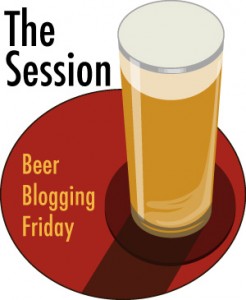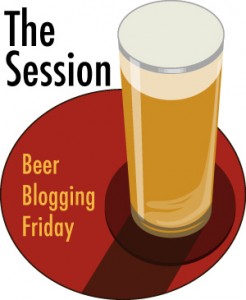
Here is the writing prompt for beer bloggers for February, courtesy of Birraire.
So, here we are. It was 4 months ago that I wrote Jay and Stan suggesting a topic for a future call. I was reflecting on the role played by Beer Festivals (or “Beer Fairs”, as we locally call the ones with the brewers serving their own beer) here in Barcelona and thought it would be interesting to know other people’s point of view on the matter. Time’s flown since then, and now I find myself happily hosting my first Session. But let’s get to it.
The discussion at hand is “Festivals: Geek Gathering or Beer Dissemination?”. I guess it is pretty much clear, but apart from exposing whether the answer is A, B or C (the latter being “it depends”) I expect participants to give us some insight into their local beer panorama to better understand the importance or irrelevance of Festivals in each area. My guess is that it can be quite different depending on the popularity of beer in different countries and cultures.
Southern California is either blessed or too blessed with sunny days that are ideal for gathering outside and drinking beer. But most events are pretty cookie-cutter. Twenty to thirty breweries pouring and passing out swag from beneath logo’d pop tents.
What elevates a beer festival from the mere cup to tap and back exchange into an actual communal experience starts with the curation by the festival organizers. When thought is put into it from the start, you will draw more curious and passionate fans.
Not to denigrate the other festivals because I firmly believe that they occupy a space on the craft beer food chain that is critical to gaining new fans and creating actual converts but when I think of festivals, the following three are the ones that leap to mind and bring a smile to my face.
The ne plus ultra of festivals out west is the Firestone Walker Invitational. Even when the weather tops triple digits, it is still a dazzling place to be. Yes, there are beer snob lines. But those lines are for once a year in California beers. The concept of the festival is simple Firestone Walker invites the breweries they want there, and then they ask them to bring at least one flagship type beer and one specialty (of course, more than two beers usually show up).
There are multiple other reasons why this is a must go (at least once) event. Food. There is lots of it and it ain’t from Food Trucks and it is really good. I stood next to Moonlight Brewing gobbling beer accented cupcakes and drinking Death and Taxes. Could have done that all day.
The grounds are spacious and they don’t oversell it. Imagine that! They could probably sell more, but they don’t.
Closer to my home. The Los Angeles Beer Week Festival is another that is more a gathering or experience. L.A. Brewers Guild members are the focus with a few others on the side. It is a chance to see everyone together. That makes it the ultimate gas and traffic saver!
And it is not only the brewers that are communal. Bloggers, home brewers and social media types abound and if you are a L.A. beer fan, you will probably run into folks you have seen around town.
Eagle Rock Brewery and their Session Fest is the last festival that is part my of beer trinity. Surprise, it is another limited affair. Usually 10+ taps of wide ranging beers with low alcohol content. IPA’s, Gose, smoke beers and the like presented with drinkability in mind. It is one of the few festivals where you can try all the beers if you wanted and not feel like a drunken fool.
There are other great ones out there. Firkfest in Anaheim has one year under the belt and was really strong with a great location and imaginative beers. Sierra Nevada and their hop festival is on my list to try, one day as are events held during San Diego and San Francisco Beer Weeks.
In the end, whether it is a gathering or simply dissemination, as long as craft beer is the focus, you can’t go too wrong.
 Now that we are all recovered from L.A. Beer Week it is time to suss out what July will be like in the L.A. craft beer world Plus…..
Now that we are all recovered from L.A. Beer Week it is time to suss out what July will be like in the L.A. craft beer world Plus…..

